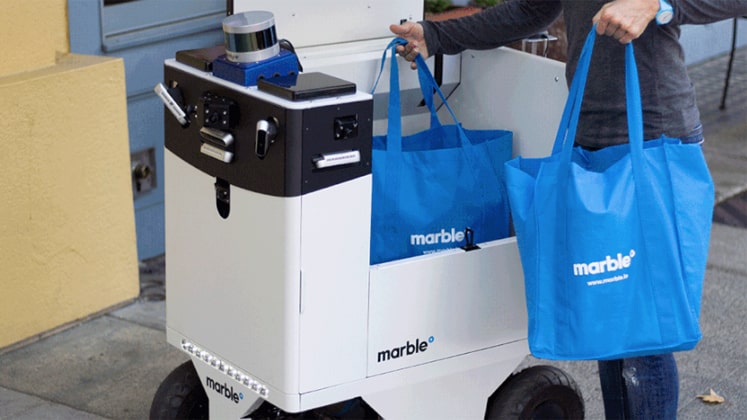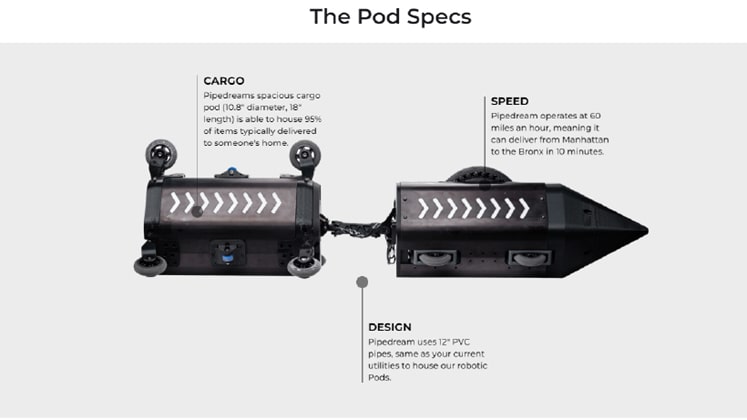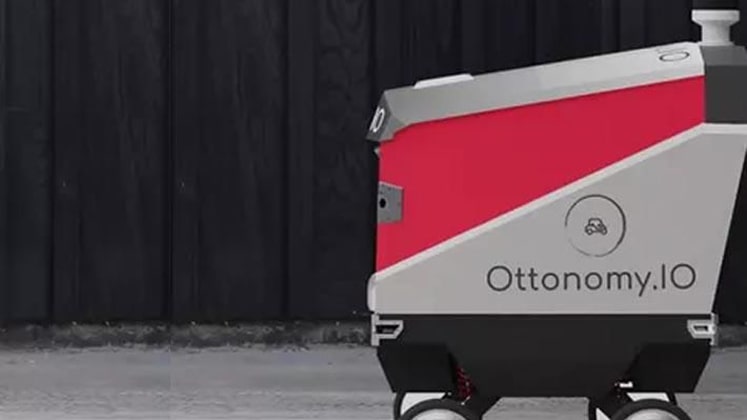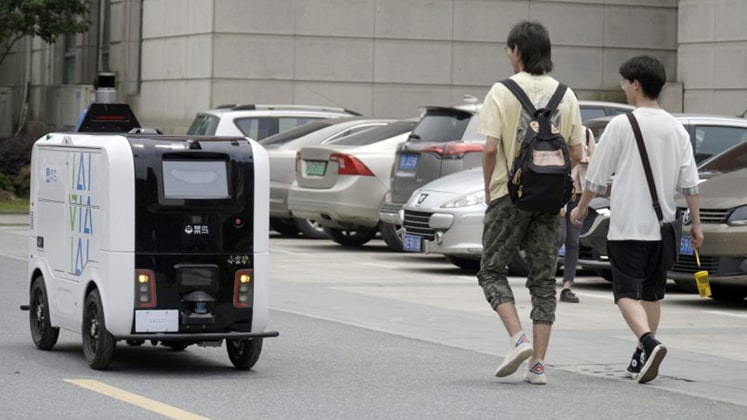A study by Baymard Institute finds that 55 per cent of the customers abandon their carts and don’t proceed further in the shopping process because of the extra shipping cost and inefficiency in the last mile of delivery leading to a higher rate of cart abandonment, making it harder for businesses. Not only this, challenges such as real-time visibility, delayed or failed deliveries, outdated technology, decreased efficiency, inefficient route planning all add up to the major challenges of the last mile delivery which sometimes accounts for more than 53 percent of the total shipping cost.
“The rising prevalence of e-commerce and online shopping, is what is influencing last-mile deliveries in the supply chain. Cart abandonment is a very important aspect and in my opinion, brands like us are focusing on moving towards a proper systematic way to deliver the packets, especially taking support of technology. Since this pattern is unlikely to reverse, last-mile delivery services need to improve their speed and effectiveness or risk falling behind”- Shehlina Soomro, Founder, Saritoria
It’s not wrong to say that last-mile delivery is turning out to be an expensive expenditure, so how can one bypass the challenge and deliver what the customer demands? Well, the most common answer is ‘AI-enabled route and planning optimisation’ and the most ambitious answer is ‘Robots’.
RaaS (Robots-as-a-Service) is changing the last-mile delivery space
As per ABI Research, robot technology will see 850 per cent growth in the next 10 years. With the implementation of robotics in warehouses, the delivery market will also go stronger with the predictions. The global logistics robots’ market is projected to grow from US $ 7.11 billion in 2022 to US $ 21.01 billion by 2029, at a CAGR of 16.7 per cent in the forecasted period. Even though RaaS is still in its early stages of development in the West, but it is clear that this growing trend has the potential to revolutionise the last-mile delivery space.
ABI Research estimates that by 2030, robotic last-mile delivery services will generate US $ 670 million in revenue, up from an estimated US $ 70 million in 2022.
Few global developments of robots in last-mile delivery
Experts suggest that technology is going to reduce the number of delivery vans on the streets and emissions by making quick and efficient deliveries. Autonomous last-mile delivery is driven by changing consumer expectations for same-day delivery. Amazon and Alibaba have invested billions of dollars in their respective supply chains in order to guarantee faster delivery times.

In July 2021, Amazon launched Amazon scout development centres in Helsinki, Finland to focus on autonomous delivery technology.
The San Francisco headquartered autonomous robot delivery fleet Starship Technologies has made more than 2.5 million deliveries and travelled over 3 million miles globally, and in a similar pattern, Alibaba group’s driverless robots Xiaomanlv crossed 10 million deliveries in 2022.
“The biggest benefit of driverless robots is that they are reliable, and their lower cost will be fully realised when they reach ‘economy of scale,’” said Hu Changqing, Operation Leader for Xiaomanlv.
Another example is from the state of Pennsylvania, where the delivery robots are now legally allowed to weigh up to 550 pounds and travel at speeds of up to 12 miles per hour as per the recent legal ruling. Additionally, UK’s online retailer Ocado has partnered with British start-up Wayve for its last-mile operations in London.

Companies such as iFuture Robotics, Ottonomy IO, Qikpod, Marble Robot, Robby Technologies, Boxbot, Neolix, Kiwibot, Aethon etc., are a few examples which are rapidly growing in the segment and are hopeful to witness changing dynamics of last-mile delivery in coming future as well. The latest edition is from Dubai-based Robot Roxo, which is being tested.
Additional conglomerates such as Amazon, Walmart, Alibaba and JD.com, have made innovations and developments to deliver packages over long distances without human intervention. For instance, Snapdeal collaborated with Ottonomy IO for delivery of packets. Ottonomy also raised a whopping US $ 3.3 million to build robots for deliveries. Alongside Pony.ai collaborating with Yamibuyare more such examples of the next-level development.
One step ahead
PipeDream Labs, a start-up in the United States, has ambitious plans to construct an underground pipe network that will be used to deliver goods across the city as a plan to map last-mile deliveries, creating a ‘middle-mile’ network in which robots will transfer goods underground through PVC pipes at breakneck speed.
Picture this! A driver picks up the product from the designated pickup spot and delivers it to the closest hub, where it gets consolidated with other deliveries and piped through the city’s underground pipes to the hub closest to the final destination, where another driver picks it up and finishes the delivery’s final mile.
The goal is to link homes together like a peer-to-peer network and make delivery possible in just a few minutes or even seconds. Even if the first and last mile of delivery are performed manually, it’s still lightning fast because it’s not dependent on things like traffic. Compared to other logistics solutions, it may also be better for the environment.
The ‘Yes / No’ and the ‘Buts’
Are robots in last-mile delivery a tough nut to crack or are easy to be used for delivery purposes? This has been a question for many businesses, as the use of robotics in the industry is constantly increasing. With the advancements in technology, it seems that there are more opportunities to use robotics in various aspects of the supply chain, including delivery for e-commerce brands.
Well, some retailers rely on the route planning and optimisation software and some are turning towards the RaaS (Robots as a Service) model.

Edouard Renard, Chief Technology Officer of Niryo said, “Instead of purchasing a robot and having to deal with initial set-up, you will be able to pay for a service on a pay-as-you-go basis without much concern. This will remove a significant barrier, and once some businesses begin to see massive results, you can expect everyone else to want a RaaS solution as well.”
Experts believe that robots have the potential to solve the problems associated with last-mile delivery by making the delivery process faster and more cost-effective. Several types of robots, including autonomous ground vehicles, aerial drones and delivery robots that travel on sidewalks and pedestrian walkways, are being developed and tested for last-mile delivery.
In order to fully realise the potential of robots for last-mile delivery, however, several obstacles must be overcome. These include navigating complex urban environments, adhering to regulations and ensuring pedestrian and other road user safety. In addition, there are social and ethical considerations regarding the use of delivery robots, such as concerns regarding job displacement and privacy. Before robots can be widely adopted for last-mile delivery, these issues need to be resolved.

Is India ready for Autonomous Last Mile Delivery? Ambitious, yet an exciting underway
India has seen a boom in e-commerce in recent years and this is likely to continue. As such, there is an increasing demand for efficient and reliable last-mile delivery solutions. Additionally, many Indian start-ups are working on developing innovative delivery robots that could potentially revolutionise last-mile delivery in the country.
Though the use of robots in various aspects of last-mile delivery is gradually increasing, there are many who doubt whether India is really ready for such a change. One of the main challenges is around cost – robots are expensive to purchase and maintain, so they need to be able to demonstrate a clear return on investment. This is a challenging task in a country like India, where there is a vast population and varied terrain. In addition, the climate is one of the factors, as extreme heat or monsoon rain can make it difficult to reach certain areas. There is also the question of infrastructure as major hindrance along with acceptance among people and government regulations.
Mukul Todi, Chief Commercial Officer, Zink London discussed, “As a company, we usually keep a close eye on our delivery partners and change them when necessary. To be realistic and not too optimistic: In my opinion, as an industry, we still need to make our deliveries seamless. Throughout the process, there is a long list of pin codes that need to be reached and connected. Technology continues to evolve and keeps the industry on the cutting edge when it comes to trying new things, but let us not forget that technology should support things, not complicate them; for now, a lot has to be done to regulate the adoption in India but I am eager to see if our country will be easy on Robot deployments or not for last-mile delivery.”
Thus, while there are some challenges to implementing robotic last-mile delivery in India, there are also many reasons to believe that the country is ready for such a change – mushrooming start-ups to automated warehouses and logistics and schemes like Pradhan Mantri Kaushal Vikas Yojana 4.0 to skill lakhs of youth within the next three years in the field of AI, Robotics, Mechatronics, drones etc.
“Following the trend, many retail players are expected to switch to autonomous last-mile delivery solutions that offer not only cost reduction but also address the high demand for online deliveries. However, the absence of country-wide policy standardisation poses challenges to the technology’s adoption at scale,” mentioned GlobalData’s Manager, Product Innovation, Saurabh Nyalkalkar,
There’s no denying the widespread adoption of robots for last-mile deliveries as businesses invest in automation tools for the supply chain management. However, it appears that there are still miles to go before robots in last-mile delivery become a common phenomenon rather than a rare one.







